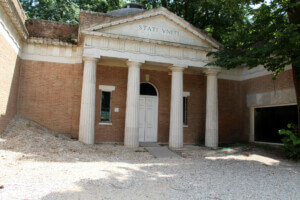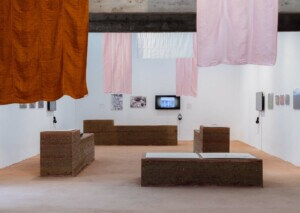One of the more intriguing parts of the 15th Architecture Biennale in Venice is the addition of three “special pavilions.” One is the Applied Arts Pavilion, which is home to the exhibition A World of Fragile Parts, a joint collaboration of La Biennale di Venezia and the Victoria and Albert Museum (V&A). It was conceived as a 21st century version of the plaster castings that were made by the museum in the 19th century for the Cast Courts, which opened in 1873, to showcase the most grandiose plaster casts (including the famous Trajan’s Column in Rome).
In the face of recent catastrophic events, such as the cultural destruction by militant groups, and environmental disasters brought about by climate change, curator Brendan Cormier is asking, “What do we copy and how? What is the relationship between the copy and the original in a society that values authenticity? And how can such an effort be properly coordinated at a truly global and inclusive scale?”
With exhibition design by London’s extraordinary Ordinary Architecture, the sprawling exhibition contains a number of plaster relics from the V&A, in addition to contemporary artists’ works that deal with copying. The Other Nefertiti by Nora Al-Badri and Jan Nikolai Nelles, from 2015, is an illegally-obtained 3D scan of the bust of Nefertiti. The original has been held at the Neues Museum since its unveiling in Berlin in 1924, despite pleas to return it to its Egyptian home. The pair of artists secretly scanned the bust using a staged Kinect Xbox controller. #NefertitiHack is an “ethical art heist” and resulted in the files being downloaded and printed for display at the exhibition in Venice.
Sam Jacob Studio is displaying a 1:1 scanned replica of a shelter from the Calais ‘Jungle’ refugee camp. The CNC-milled synthetic stone sculpture elevates this ad-hoc object of survival into an artwork. The mark of the machine is left, and parts of the tent are rendered in low-resolution, with the digital faceted geometry intact.
Institute for Digital Archaeology (IDA) responded directly to the ISIS crisis, producing a copy of a part of Palmyra’s destroyed Triumphal Arch, which was destroyed in 2015. IDA used a computerized stone cutter to print the digital model that was created using photogrammetry, where hundreds of images are processed to produce a 3D file. It is part of the Million Image Database, an effort by the IDA to document world heritage through the distribution of special 3D cameras to volunteers around the world.
“The increasing accessibility of 3D scanning and printing couldn’t be timelier in the context of cultural preservation, as the threat of destruction and damage of our global material heritage rises. A World of Fragile Parts poses questions related to the legitimacy, ownership and significance of copies while highlighting their preservation value as they allow for physical, but also for cultural, emotional and political survival,” said Cormier.










